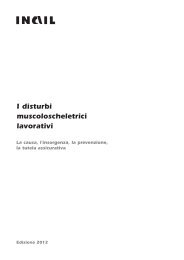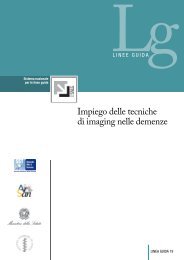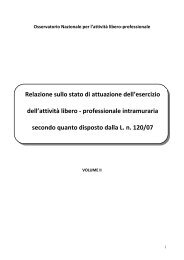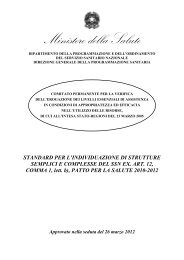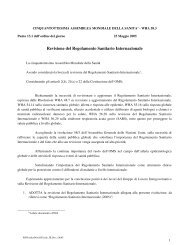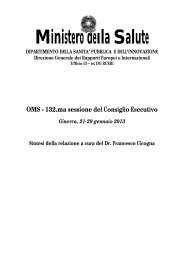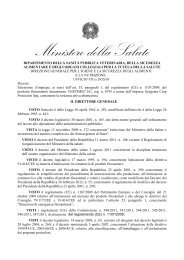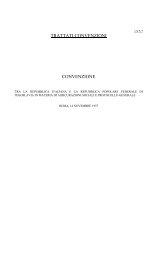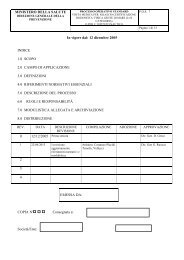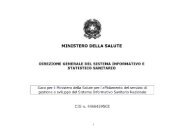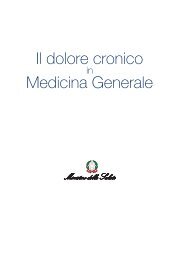hta_ knee intro.qxp - Ministero della Salute
hta_ knee intro.qxp - Ministero della Salute
hta_ knee intro.qxp - Ministero della Salute
Create successful ePaper yourself
Turn your PDF publications into a flip-book with our unique Google optimized e-Paper software.
24<br />
6.1.3 Evidence synthesis<br />
After the application of the inclusion criteria we extracted data and conducted appraisal of<br />
methodological quality in duplicate. Data were extracted from all articles meeting inclusion criteria<br />
using a standardised data extraction form used in our previously published HTA reports 23<br />
(Appendix 7). Registry-based studies were extracted using a specific form (Appendix 8). We summarised<br />
studies using an evidence table by <strong>knee</strong> system. Methodological appraisal was conducted<br />
using a specific assessment tool developed by Agency for Healthcare Research and Quality<br />
(AHRQ) 24 that includes a list of domains to evaluate the quality of single studies (Appendix 9).<br />
6.2 Assessment of outcome: effectiveness of <strong>knee</strong> prostheses<br />
6.2.1 Effectiveness and safety of <strong>knee</strong> prostheses: definitions<br />
We considered the effectiveness of <strong>knee</strong> prostheses used in Italy as the survival of the <strong>knee</strong><br />
system used in the primary TKR at a minimum period of follow-up of 5 years. The survival rate<br />
can be calculated by subtracting 100 from the revision rate. Safety is strictly related to effectiveness.<br />
Revision is understood as the failure of the prosthesis due to a non-traumatic event. The definition<br />
of failure in traditional survival statistics is “revision of one or more implant components or<br />
removal of the whole prosthesis”. Although the indications for revision are known to be sensitive<br />
to local conditions, the general consensus appears to favour revision as a blunt endpoint encompassing<br />
the main dimensions of outcome. We recognise the magnitude of other indicators of outcome<br />
(e.g. pain, range of motion) but implant revision is the only event that can be precisely identified<br />
and registered.<br />
In our analysis we did not consider the effectiveness of the revision procedure (ICD-9-CM<br />
81.55).<br />
6.2.2 Literature results<br />
A total of 519 abstracts were identified in the literature. We excluded 433 citations by reading<br />
title and abstract. After this stage we identified 86 potential relevant studies which were retrieved<br />
for full text reading. We excluded 81 studies for various reasons after application of inclusion criteria.<br />
The list of excluded studies and the reason of exclusion are in Appendix 10.<br />
Finally 5 studies were considered for inclusion in our systematic review. We found no systematic<br />
reviews, 1 prospective comparative cohort study 25 , 2 randomised controlled studies 26,27 , 1<br />
prospective cohort study 28 and 1 registry based study 29 . The list of included studies is in Appendix<br />
11. The evidence flow is in the following flow chart diagram (Figure 6.1).



